Browse through our articles about some of the most interesting culture traditions in the areas where we run our cycling holidays. From food to festivals, discover some of the things that help to shape the various regions of Spain and Southern France.
Food & Drink
Gazpacho Andaluz - The Foods that Define Spain
Andalucia is the most visited region in Spain. As well as a fantastic coastline, it contains the historic cities of Seville, Granada and Cordoba. Andalucia is also the home to the highest mountains on the Iberian peninsular, flamenco and tapas. It is, however, a different food that we profile in this article from our Foods that Define Spain series - Gazpacho.Gazpacho is a quintessentially Andalucian dish, which has now become common throughout Spain (and further afield). Gazpacho is basically a cold tomato soup; however, the quality of the ingredients and the preparation really make the dish stand out.
Click here to read more
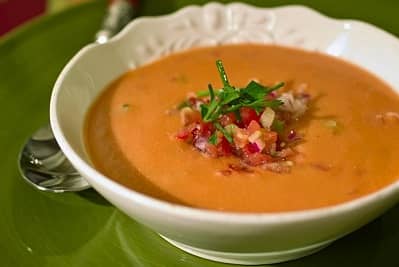
Paella Valenciana - The Foods That Define Spain
Paella is probably the most famous of all Spanish dishes. The famous rice dish originates from the Valencia region, specifically from the large albufera lagoon, just to the south of the city of Valencia. Although it is now common to find Paellas containing seafood, meat and all kinds of vegetables, Paella Valenciana is very specific in its ingredients.Paella is a dish that evolved over time. The eating of rice as a staple food became common during the Moorish rule of Spain. It was not, however, until the early 19th century that the term paella became commonly used for the dish (rather than for the name of the pan the dish is cooked in). Find out more about the history of paella, how it should be prepared and where are the best places to eat it...
Click here to read more
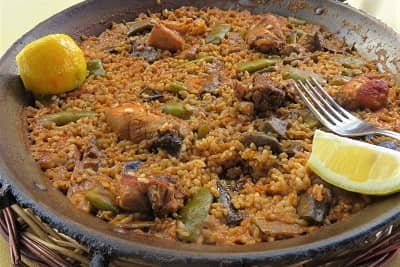
Visiting the Wineries of Rioja
The wineries and vineyards of Rioja are the main attraction for most visitors, and they are very densely populated in the region, making them ideal to explore by bike. Red wine is the main industry here, with the Tempranillo grape and French oak dominating. But there are also some decent whites which have been growing in the past few years. Rioja red wine has four categories: Joven (the youngest and cheapest), Crianza, Reserva and Gran Reserva (the longest aged and most expensive).On the map we have highlighted some of our favourite wineries, which are centred around several different towns. This wine-cycling tour visits some of the most renowned vineyards, utilising quiet routes throughout.
Click here to read more
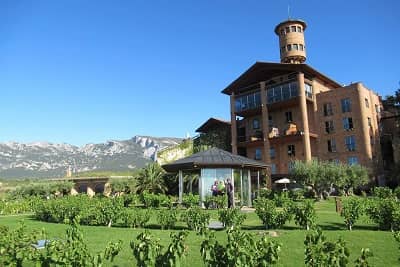
The Foods That Define Spain - Fabada Asturiana
Asturias is a fantastic region for cycling. It is home to both the Picos de Europa and the Somiedo Natural Park, boasting between them climbs such as Lagos de Covadonga, La Farrapona and Fuente De. It is also home to the most challenging road climb in Spain - the Alto del Angliru.In this post, however, we are focused on the excellent cuisine in the region - the highlight of which is Fabada Asturiana. Find out why it is more than just a bean and sausage stew!
Click here to read more
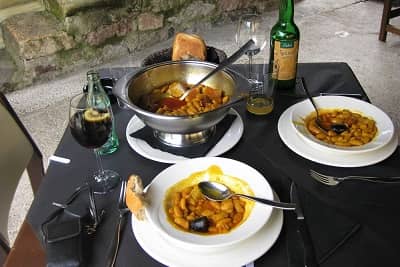
The Foods That Define Spain - Callos a la Madrilena
Madrid has many great restaurants serving a variety of international and Spanish cuisine. Many of the Spanish restaurants take their influence from regions other than Madrid. Pintxos from the Basque Country, Andalucian tapas and paella from Valencia are common place in the city along with many fresh fish dishes.Amongst these more well known meals, however, there are a few dishes served which are traditional to Madrid. Perhaps the most celebrated and traditional of these, is callos a la madrileña.
Click here to read more
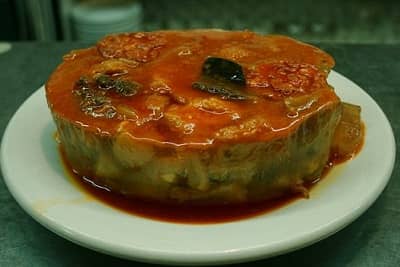
The Foods that Define Spain - Basque Pintxos
Pintxos are one of the most unusual creations of Spanish cuisine. In theory they are nothing more than a small, open sandwich that can be taken as a snack before a main meal.In reality, however, pintxos have created their own gastronomic sub-culture and are now continually evolving into more elaborate and creative designs. Thanks to pintxos, a walk around the old of towns of San Sebastian and Bilbao becomes one of the finest culinary experiences in Spain.
Click here to read more
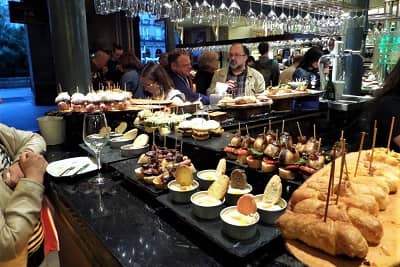
The Foods that Define Spain - Pulpo a la Gallega
While castles, cathedrals and languages are recognised as having great importance in shaping the social and economic development of regions, food is often overlooked. However, recipes using local produce are often a defining characteristic of an area. Being passed on for generations, they provide a continuity in areas which have undergone much physical and social change.This series of articles looks at some of the foods that define the different regions of Spain. From the wet, mountains Basque Country, to the dry plains of Castilla La Mancha, each region has a signature dish which showcases the uniqueness of the area.
Click here to read more
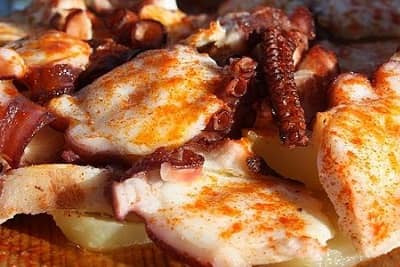
Top Ten Spanish Tapas
Food is an important part of our cycling tours, and on all of them we regularly enjoy tapas.Tapas is one of Spain's main culinary exports. However, outside of the country it is rarely done with the style and history that makes it so tasty in Spain.
Throughout Spain there are hundreds of different variations of tapas; the following are top ten that you have to try. The list features some tapas common throughout Spain, and some with a more regional bias...
Click here to read more
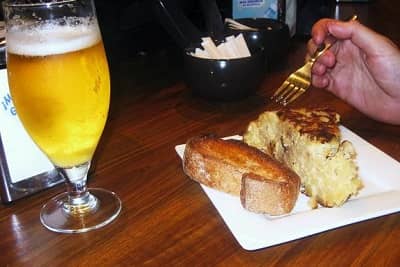
Festivals & Celebrations
Semana Santa in Seville
Semana Santa (Holy Week) is a big deal throughout Spain. In many English speaking countries, it is an excuse to have a few days off work and eat a bit of chocolate; in Spain, however, it is a week of processions, music and street parties. Although it is celebrated throughout the country, the biggest and most famous is in Seville, the capital of Andalucia.Hundreds of thousands of tourists visit Seville each year for its Holy Week processions which take place several times each day from Palm Sunday until Easter Sunday. The processions are carried out by various brotherhoods from the city, made up of a few hundred to several thousand 'Nazarenos'. The brotherhoods recreate the events of Holy Week (as suggested by the bible) adding their own interpretation at times, but usually carrying wooden structures to depict their part of the story...
Click here to read more
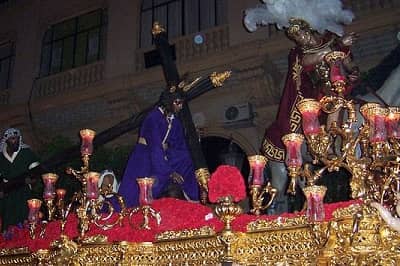
Las Fallas Festival - Valencia
Las Fallas is a week long festival in Valencia during March. It is one giant party with unique events which you will not find anywhere else in the world.From niñots, to mascletas, paella contests and firework displays, this article will introduce you to the amazing spectacle of Fallas. Las Fallas is a true festival of noise, color and partying that rivals any fiesta in Spain and beyond.
If you like the sound of it, you can book on our cycling holiday in Valencia during March to get a first hand experience of the celebrations.
Click here to read more
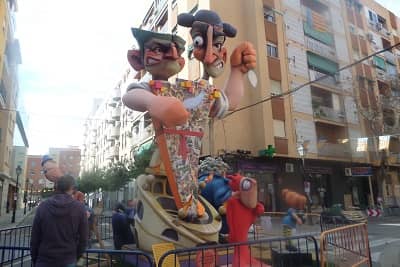
Dia de los Reyes (The Day of the Kings)
The Dia de Los Reyes is an important festival in Spain. Celebrated on the 6th January, it is of course a festival marking the three kings that brought gifts to the baby Jesus.The day is nearly as important in Spanish culture as Christmas, especially for children; as it is on the Dia de los Reyes that presents are exchanged in Spain.
It is also traditionally celebrated by eating a huge cake known as a roscón.
Click here to read more
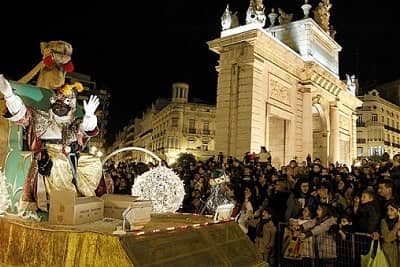
Other Culture
The Different Languages of Spain
Spain is one of the most culturally diverse countries in Europe. There are seventeen autonomous communities in Spain, most of them with their own distnictive festivals, food and traditions; many of them also have their own language.Our cycling holidays visit many of these regions, so here we look at the various languages in Spain; how they are related and how common they are in everyday usage, to ensure that you are well prepared.
Click here to read more
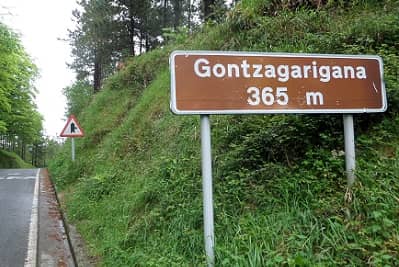
Five Things to do in Valencia
Valencia is one of the most intruiging cities in Spain. It is the third biggest city in Spain, but, unlike Madrid and Barcelona, it has a very relaxed atmosphere. Valencia has a rich history, with the Roman and Moorish influence apparent; but it also boasts cutting edge modern architecture and design.Most of all though, it is a fun city to visit. The people are relaxed and friendly, and the culture of the city has not been heavily influenced by toursits; as is the case in, for example, Alicante or Malaga. If you are a first time visitor to Valencia, you may wonder what you can see and do in the city. Here is our list of the top five experiences in Valencia...
Click here to read more
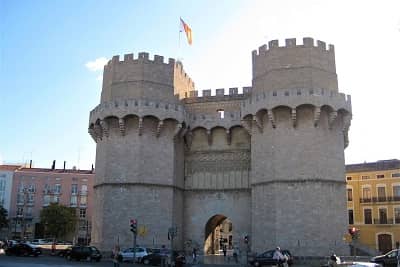
For further reading, check out our articles about some of the
great historic monuments and stories of Spain and Southern France. We also have many
Cycling Guides to different regions, as well as general information about
cycle touring.
And if you would like to visit some of these places in person without the stress of organising your own trip, we would be delighted if you would join us on one of our Cycle Holidays.
And if you would like to visit some of these places in person without the stress of organising your own trip, we would be delighted if you would join us on one of our Cycle Holidays.